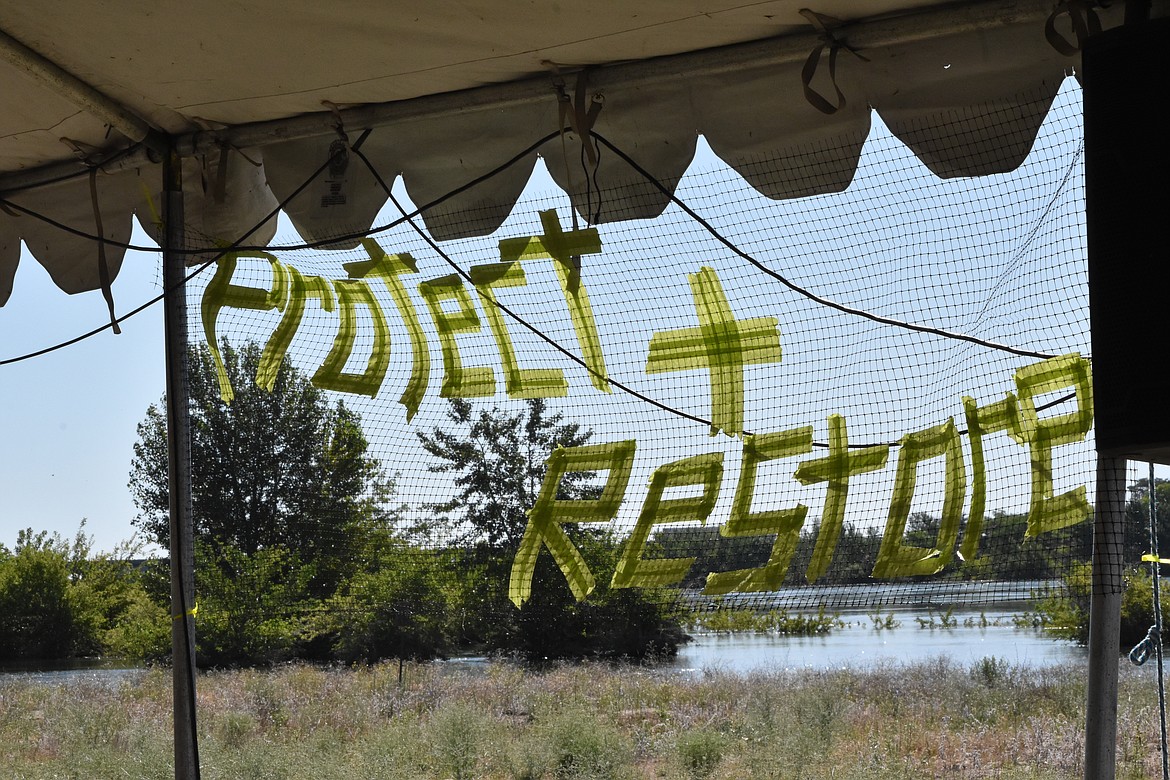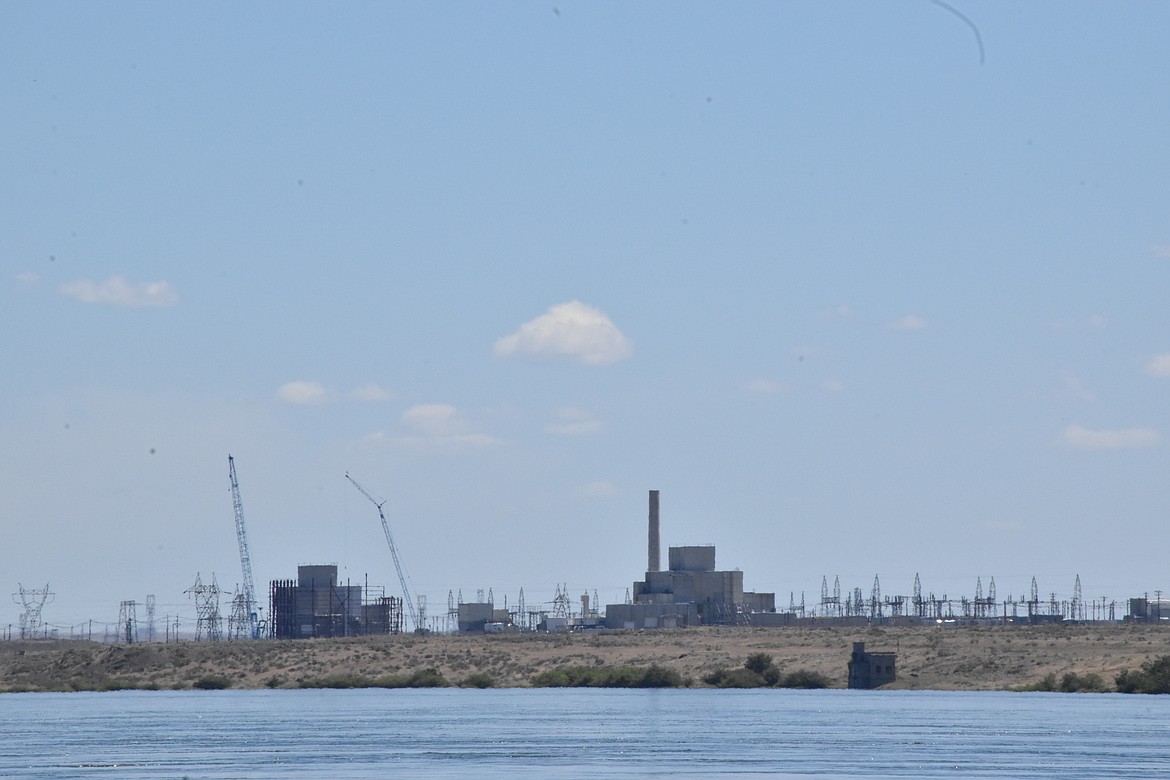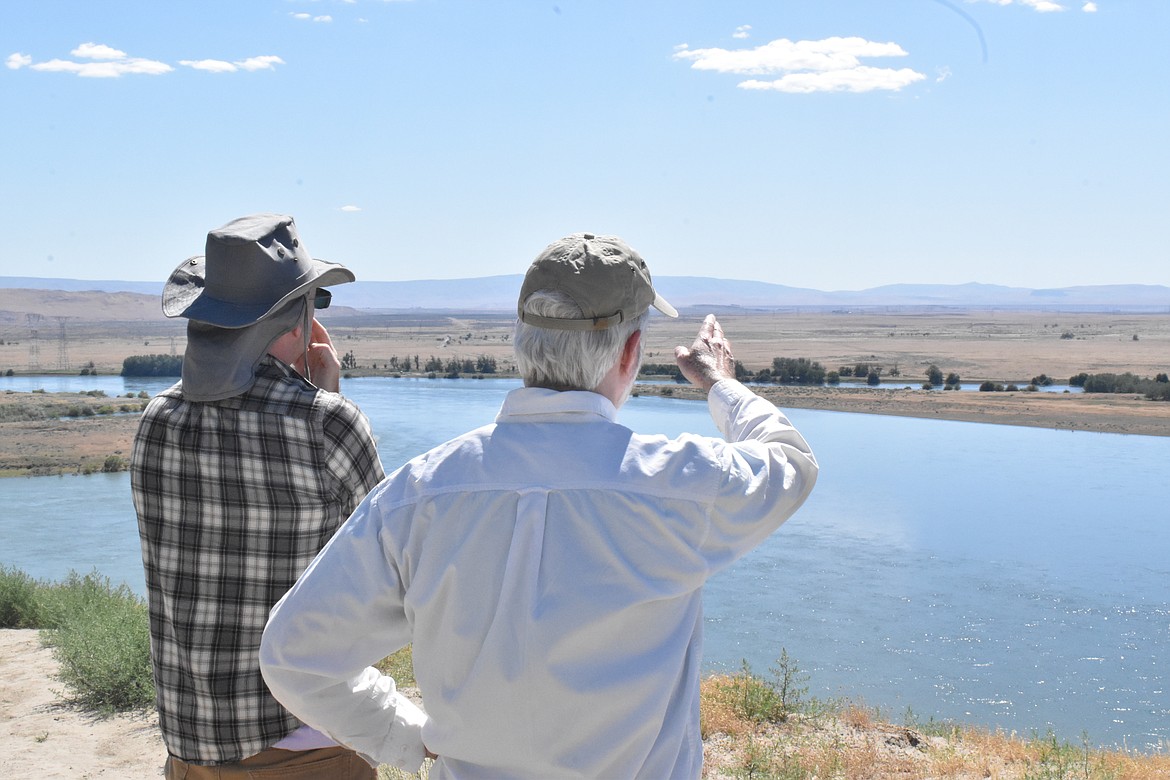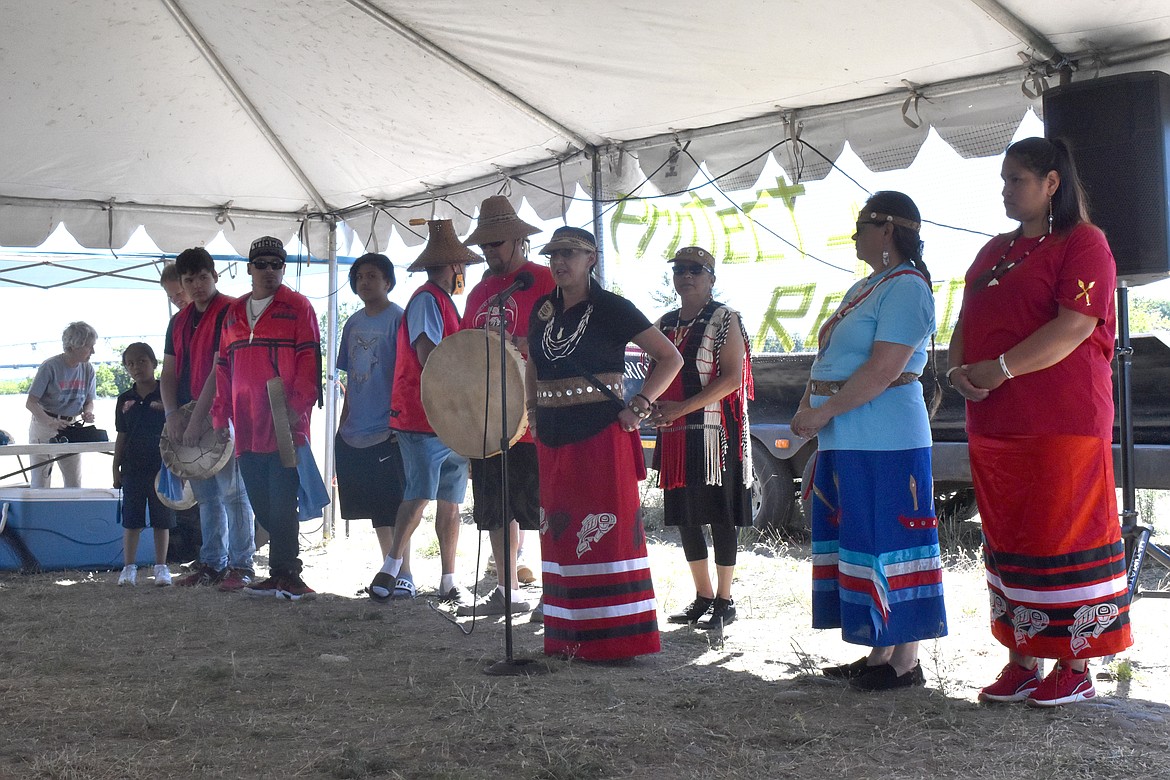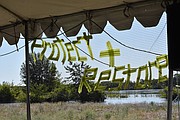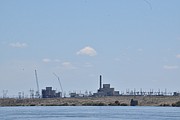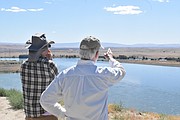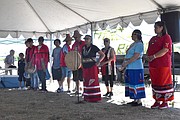Hope for Hanford
MATTAWA — The second annual Hanford Journey was held June 24 at the Vernita Boat Launch. The event familiarizes people with the area, educates them on the history of the Hanford site and lobbies for people to take action for change.
“This year’s Hanford Journey was an incredible event sharing the past, present and future of Hanford cleanup,” said Dan Serres, Conservation Director at Columbia Riverkeeper. “We need to hold the federal government accountable; radioactive and toxic pollution from the Hanford Nuclear Site threatens people’s health, salmon and water quality. I hope people walked away feeling inspired to continue the fight.”
The event brought together people and organizations with the singular goal of pushing for a real Hanford cleanup. Some of the attendees included the Washington State Department of Ecology, the Puyallup Canoe Family, Yakama Nation tribal members, Yakama Nation Environmental Restoration and Waste Management Program, Columbia Riverkeeper and Yakama Nation Fisheries, among others.
“The Hanford Journey is a day-long event along the Columbia River’s shores to celebrate generations of cleanup advocacy and traditions of resiliency while inspiring and empowering cleanup action today,” a release from Columbia Riverkeeper said.
There were many points in the event that Native American speakers and attendees spoke in their native tongue to introduce themselves, to pray or sing. The all-day event featured speakers, boat tours and a hike of the Hanford Reach National Monument. This was the second time the event was held, the first was in 2019, but a gap occurred in 2020 and 2021 due to the pandemic. It was funded through a Public Participation Grant from the Washington State Department of Ecology.
Columbia Riverkeeper, an organization working to protect and restore the Columbia River in its entirety, aims to follow Columbia River tribes and offer a vision for Hanford that involves people fishing, hunting and living along the Hanford Reach.
The Hanford Reach was an important area to Native American peoples, especially the Yakama Tribe, for an innumerable number of years until the land was signed over to the U.S. Federal Government in an 1855 treaty. Despite the treaty, Native Americans still lived and fished along the Hanford Reach until the early 1940’s when the government constructed the top-secret Hanford site to create plutonium for the Manhattan Project and nuclear weapons throughout the Cold War, according to the press release.
One speaker at the Hanford Journey event, Laura Watson, Director of the Washington Department of Ecology, said the federal government did not hold up their end of the agreement that founded led to the Hanford site’s development.
“We did our part during World War II, we did our part throughout the Cold War to support the federal government’s national priority efforts, the national security efforts, but now the federal government has to live up to its obligation and make sure that the site is cleaned up. Any alternative is absolutely unacceptable,” Watson said.
Watson said it would take $3.5 billion a year to keep the Hanford site on track in its cleanup efforts and that currently, the federal government is only allocating about $2.5 billion a year.
“We have to, together, keep the federal government on track to get the Hanford site cleaned up,” said Watson. “We cannot let the federal government short change this obligation.”
Part of the event allowed guests to take a boat tour up the Columbia River where some of Hanford’s nuclear reactors can be seen from the water.
Washington State District 46 Representative Gerry Pollet (D-Seattle) has been an advocate for Hanford cleanup and restoration since the 1980s. He attended the event and gave a small address to the group. He said he is committed to ensuring the state of Washington recognizes and observes the sovereignty of the Yakama Nation, especially through the cleanup efforts at Hanford.
Another speaker, Davis Washines of the Yakama Nation Department of Natural Resources, spoke about the meaning that the land has to him and Indigenous Peoples in the area.
“We’re not pro-nuclear and we’re not anti-nuclear, we’re pro-safety,” Washines said. “That has a lot of meaning to us, to our people. And not just for us, our personal safety, but to this ground, to the water, because they were here before we were.”
He encouraged attendees to take the time to remind themselves how important the cleanup work is.
“We have a duty and a responsibility to protect, because you see all the children that are here, they represent the future. The elders told us we don’t own this, it doesn’t belong to us, it belongs to them, even the ones not even born yet. And we pass it on, that responsibility to them and teach them so that one day, their generation will have the ability to carry on,” said Washines.
Rebecca Pettingill may be reached at rpettingill@columbiabasinherald.com.
Did you know?
Yakima with an I is the name of the Washington city named after the Yakama tribes, which is spelled with an A where the I is in the city name. The Yakama Nation includes the Yakama Palouis, Pisquouse, Wenatchsahpam, Klikatat, Klingquit, Kow-was-say-ee, Li-was, Skin-pha, Wish-ham, Shyiks, Ocehchotes, Ka-milt-pha, and Se-ap-Cat confederated tribes and bands of indigenous peoples. In the mid-1990s, the Yakama people renamed themselves to the A spelling in order to more closely reflect the pronunciation of the word in their native tongue.




